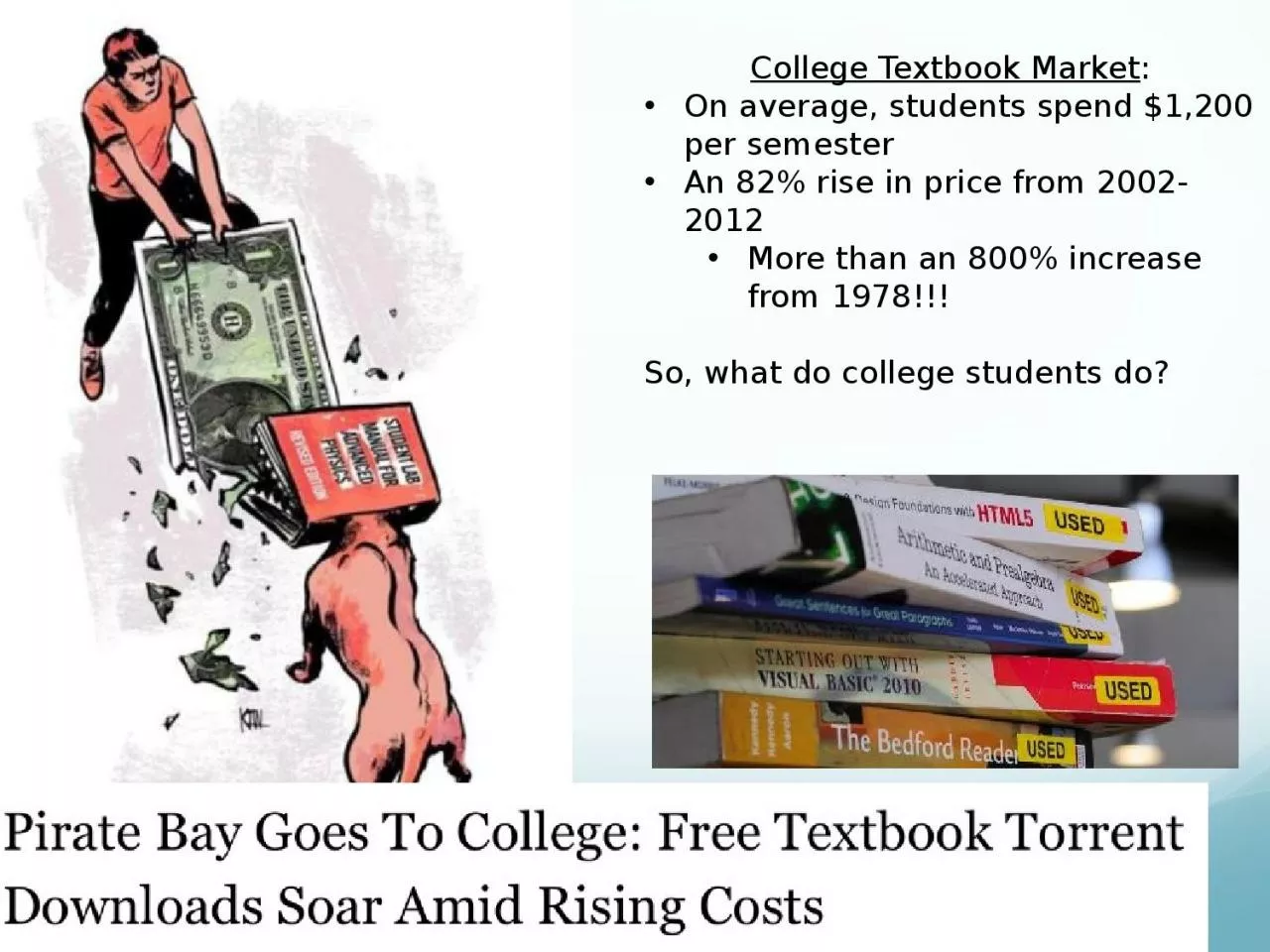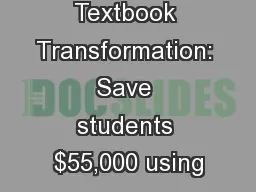PPT-College Textbook Market :
Author : nicole | Published Date : 2023-11-03
On average students spend 1200 per semester An 82 rise in price from 20022012 More than an 800 increase from 1978 So what do college students do Consumer and Producer
Presentation Embed Code
Download Presentation
Download Presentation The PPT/PDF document "College Textbook Market :" is the property of its rightful owner. Permission is granted to download and print the materials on this website for personal, non-commercial use only, and to display it on your personal computer provided you do not modify the materials and that you retain all copyright notices contained in the materials. By downloading content from our website, you accept the terms of this agreement.
College Textbook Market :: Transcript
Download Rules Of Document
"College Textbook Market :"The content belongs to its owner. You may download and print it for personal use, without modification, and keep all copyright notices. By downloading, you agree to these terms.
Related Documents













